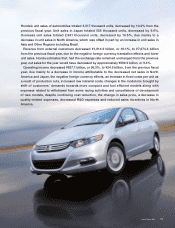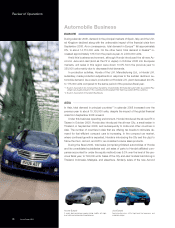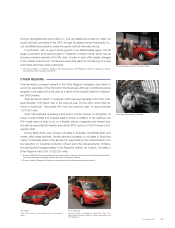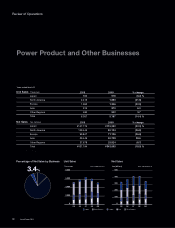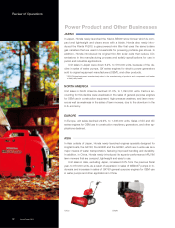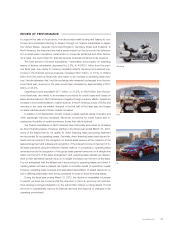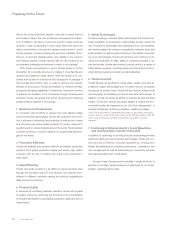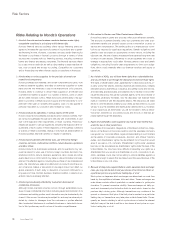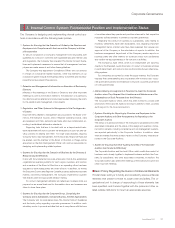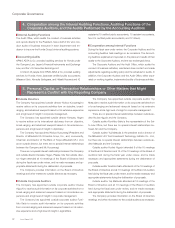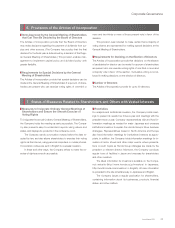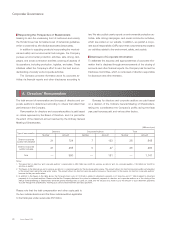Honda 2009 Annual Report Download - page 37
Download and view the complete annual report
Please find page 37 of the 2009 Honda annual report below. You can navigate through the pages in the report by either clicking on the pages listed below, or by using the keyword search tool below to find specific information within the annual report.
To support the sale of its products, Honda provides retail lending and leasing to cus-
tomers and wholesale financing to dealers through our finance subsidiaries in Japan,
the United States, Canada, the United Kingdom, Germany, Brazil and Thailand. In
North America, the financial crisis had a severe impact on the economy, the deteriora-
tion in employment conditions, deterioration in consumer sentiment and other factors.
As a result, the environment for financial services business remained under pressure.
The total amount of finance subsidiaries—receivables and property on operating
leases of finance subsidiaries decreased by 2.2%, to ¥4,860.1 billion from the previ-
ous fiscal year, due mainly to currency translation effects. Revenue from external cus-
tomers in the financial services business increased ¥48.7 billion, or 9.1%, to ¥582.2
billion from the previous fiscal year, due mainly to an increase in operating lease reve-
nue. Honda estimates that, had the exchange rate remained unchanged from the pre-
vious fiscal year, revenue for the year would have increased by approximately ¥124.7
billion, or 23.4%.
Operating income decreased ¥37.1 billion, or 31.5%, to ¥80.6 billion from the pre-
vious fiscal year, due mainly to an increase in provisions for credit losses and losses on
lease residual values in North America and negative foreign currency effects, despite an
increase in income attributable to higher revenue. In North America, prices of SUVs and
minivans in the used car market dropped in the first half of the fiscal year, and losses
on lease residual values of these models increased.
In addition, from September onward, losses on lease residual values of sedans and
other passenger vehicles increased. Moreover, provisions for credit losses also in-
creased as the ability of certain customers to pay their debts declined.
Our finance subsidiaries in North America have historically accounted for all leases
as direct financing leases. However, starting in the fiscal year ended March 31, 2007,
some of the leases that do not qualify for direct financing lease accounting treatment
are accounted for as operating leases. Generally, direct financing lease revenues and in-
terest income consist of the recognition of finance lease revenue at the inception of the
lease arrangement and subsequent recognition of the interest income component of to-
tal lease payments using the effective interest method. In comparison, operating lease
revenues include the recognition of the gross lease payment amounts on a straight-line
basis over the term of the lease arrangement, and operating lease vehicles are depreci-
ated to their estimated residual value on a straight-line basis over the term of the lease.
It is not anticipated that the differences in accounting for operating leases and direct fi-
nancing leases will have a material net impact on Honda’s results of operations overall;
however, operating lease revenues and associated depreciation of leased assets do re-
sult in differing presentation and timing compared to those of direct financing leases.
During the fiscal year ending March 31, 2010, the decline in receivables is forecast
to persist, as there are concerns that the downturn in the U.S. economy will continue,
thus causing prolonged stagnation in the automobile market. Looking ahead, Honda
will work to substantially improve its financial services and respond to changes in the
operating environment.
REVIEW OF PERFORMANCE
Pilot
Goldwing
RL
Annual Report 2009 35


